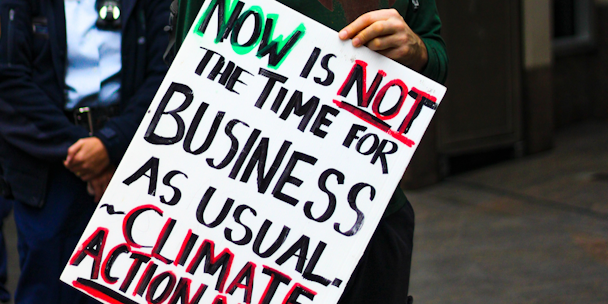What does the greenwashing crackdown mean for marketers?
This week, the Competition and Markets Authority (CMA) – a UK government regulatory body – and Advertising Standards Authority (ASA) announced they were cracking down on environmental and sustainability claims. Marketers may think they are already compliant, but how can they ensure they are abiding by the new guidelines? Jessi Baker of Provenance, a tech platform that helps brands track the journey of their products, weighs in.

Marketers may think they are already compliant, but how can they ensure they are abiding by the CMA’s new guidelines?
With the publication of its Green Claims Code on Monday this week, the CMA upped the ante against corporate greenwashing. Just two days later, the Advertising Standards Authority (ASA) entered the fray announcing a series of inquiries, while sister-body the Committee of Advertising Practice (Cap) teed up new guidance on environmental claims to advertisers. And all this in a week when ‘born-good’ brand Innocent and top ad agency Mother were called out for alleged greenwashing by Plastics Rebellion.
Things are moving fast and scrutiny on sustainability-based marketing claims is reaching new heights. The CMA has given brands until the new year to ensure their claims are compliant before it begins its own investigation. The upshot? To avoid brand reputation damage – and potential alienation of shoppers – marketers need to move quickly to ensure compliance issues are no longer simply left to the legal team.
Here’s what marketers need to do right now to ensure they keep their brand on the right side of the law – and consumers:
Really get to know your counterparts in sustainability
The Green Claims Code calls for substantiation of all claims. That will rely on an effective working relationship between marketing and sustainability teams to enable brands to translate the reality of their impact into clear, evidenced claims.
According to the guidance, the CMA will also be checking that environmental claims are up to date. Supply chains are in constant flux, which means products’ social and environmental impact evolves. Add to that the fact that scientific understanding and consumers’ expectations are also changing every day in this area, and it’s clear that the old cadence of an annual check-in with each other won’t cut it. It’s time to establish proper reporting mechanisms and data flows between marketing and sustainability.
Once these silos are broken, technology can be an important part of the solution, helping those teams to work in tandem: thanks to dedicated software, brands can easily update data in one place to ensure they are sharing their latest sustainability progress across multiple channels in accurate and meaningful ways.
Every word matters
It has long been the role of marketers and creative agencies to help make complex messaging digestible for the public. When it comes to making environmental claims, marketers have a particularly timely opportunity to translate intricate – and sometimes seemingly impenetrable – sustainability data into claims that empower customers to ‘shop their values’. Take carbon, for example: in the run up to Cop26 we’ve seen a cascade of corporate ‘net zero’ claims, but half of UK adults would still struggle to define the term.
Starting now, marketers must define the terms they use around every single claim. Specificity is crucial. The Green Claims Code is clear: high-level terms like ‘environmentally friendly’, ‘eco’ or ‘sustainable’ don’t provide any real indication of what is meant and can therefore be considered misleading.
One of the particular challenges that the CMA’s guidance poses to marketers is the requirement for a large amount of supporting evidence and clarification around each claim. As the Green Claims Code itself proposes, to maintain brevity and clarity in the context of limited space on-pack, online and in-store, marketers will need to lean into clickable online claims and QR codes that then take the shopper directly to detailed explanations and verifiable proof points about a product’s ingredients and provenance.
You can’t rely on ‘technically true’ for your eco-claims
The Green Claims Code draws a careful distinction between truth and accuracy, noting that brands can mislead customers even with claims that are factually correct.
In practice, this might come down to the overall presentation of a claim: the wording, logos and imagery, or the omission of key information. But the guidance also means that brands that have, until now, overemphasized isolated positives in their supply chains need to communicate honestly about the entire lifecycle of a product. Similarly, it might be technically true to describe your product as recyclable or compostable, but without giving any direction to shoppers for how to do so, your claims will not pass the test.
I know that this flurry of action from legal bodies will have some marketers worried. But for a number of brands, it represents a huge opportunity. By canceling out unproven and misleading claims, regulatory action levels the playing field. Legitimately ‘green’ businesses will soon see a commercial return on their sustainability investment.
Jessi Baker MBE is the chief executive officer and founder of Provenance.org.
